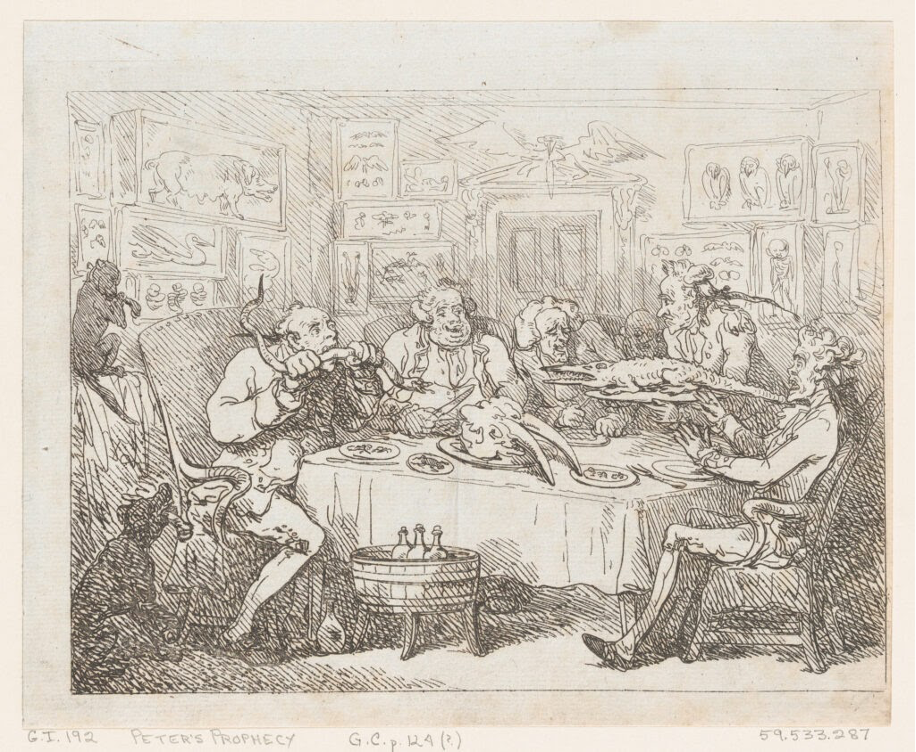The Kitchen in the Cabinet is a digital exhibition that explores the historical intersections of food and natural science. It features centuries-old food specimens that have stood the test of time.

Food is ephemeral. Given its perishable nature, historical studies of food’s material culture tend to focus on recipes, cookbooks, food vessels, utensils, and menus—physical artifacts other than food itself. Yet some past foodstuffs survived against the odds, mostly by being conserved in natural history collections. This exhibition tells the individual stories of those objects. Scientific archives offer a trove of extant artifacts related to the history of food, as early modern naturalists converted edible animals, vegetables, and minerals into long-lasting specimens—though sometimes not without first taking a bite for themselves (as satirized in the print above and discussed in the exhibition).
The interactive image on the site’s homepage was adapted from Denis Diderot and Jean-Baptiste le Rond d’Alembert’s famed Encyclopédie, a major contribution to Enlightenment print culture that, in the process of striving to catalogue all human knowledge, visualized the worlds of craftspeople. By extracting these specimens from a scientific or museum context and re-inserting them back into an early modern artisanal space, the exhibition stresses the contingency of an object’s categorization, and hence its survival, through the ages. Rollover images, which appear when you hover your cursor over the main photograph on each artifact’s individual page (such as this), likewise show the instability of the object’s status as a specimen rather than food.
The interactive homepage also highlights the labor and craft behind both scientific knowledge production and food production and preservation. It features a sealing wax workshop—sealing wax being used in the eighteenth century both to preserve food, as a component in an early method of canning, and to protect fragile natural history specimens tucked within the folded pages of scientific correspondence. Finally, by scattering objects throughout the scene, the exhibition asks visitors to reenact the scavenger hunt of our team’s research process, finding thought-to-be-lost food specimens hidden in plain sight. It offers a visual testament to the persistence of food in the archive, and a reminder that the history of food and the history of science cannot be narrated separately, for they are the same story.
The project is led by Dr. Whitney Barlow Robles, a Postdoctoral Fellow in Dartmouth College’s Society of Fellows and Department of History, with support from Venture Funding from the Society of Fellows through a grant from the Andrew W. Mellon Foundation. It is also affiliated with the Natural Things | Ad Fontes Naturae research group based out of Stanford University.